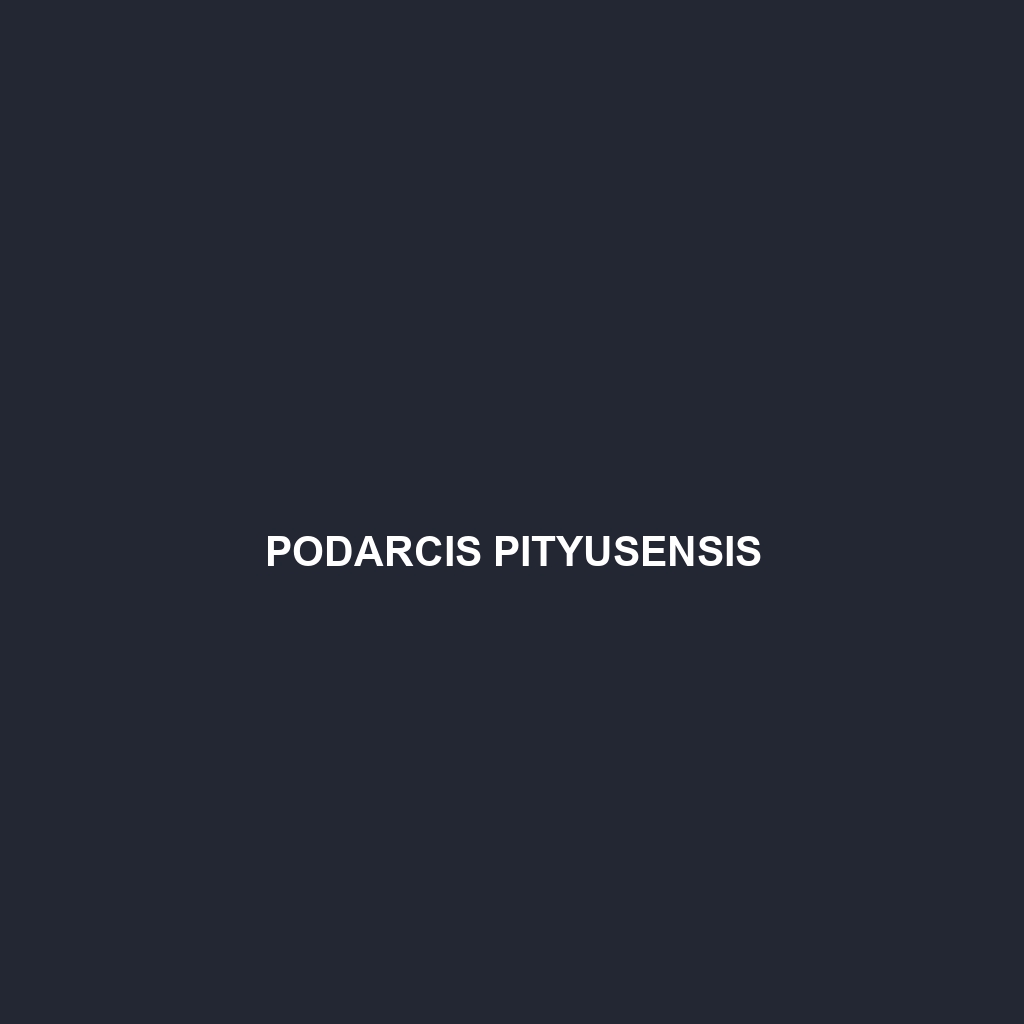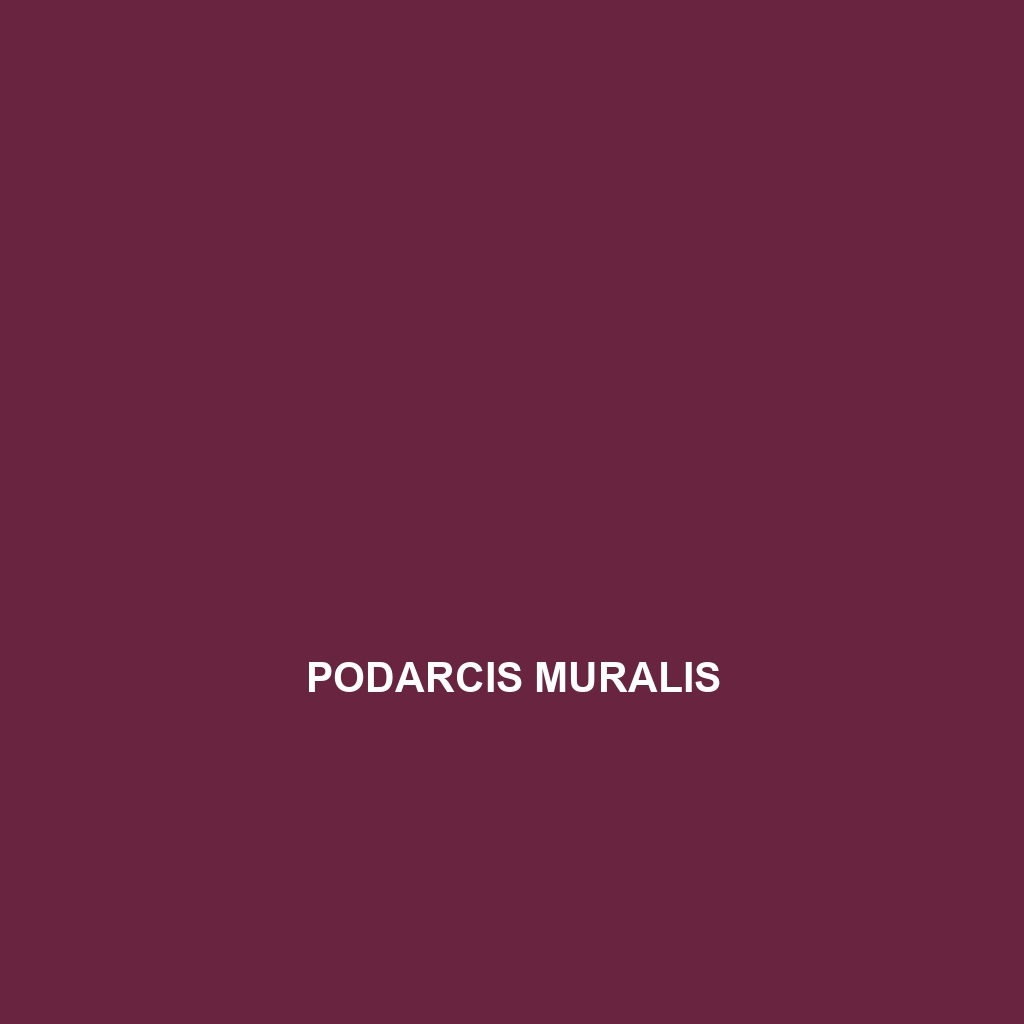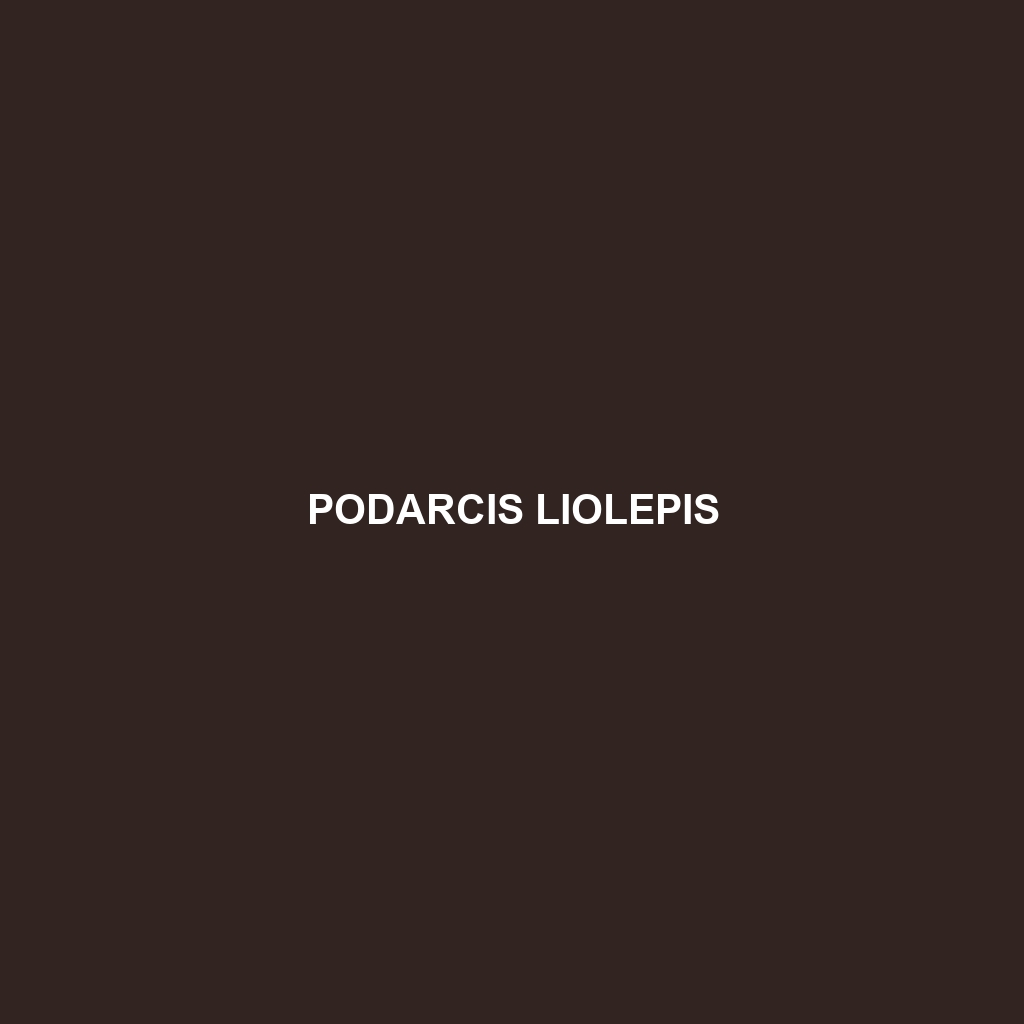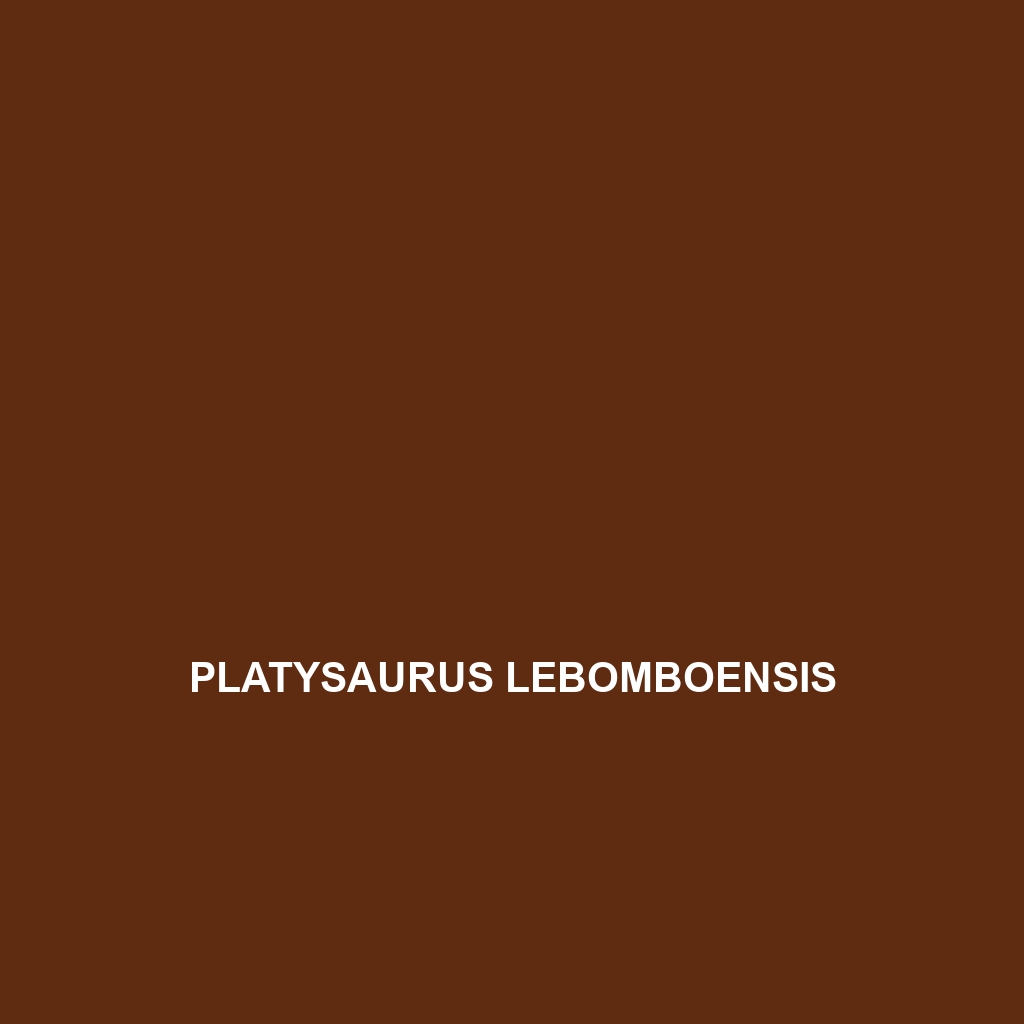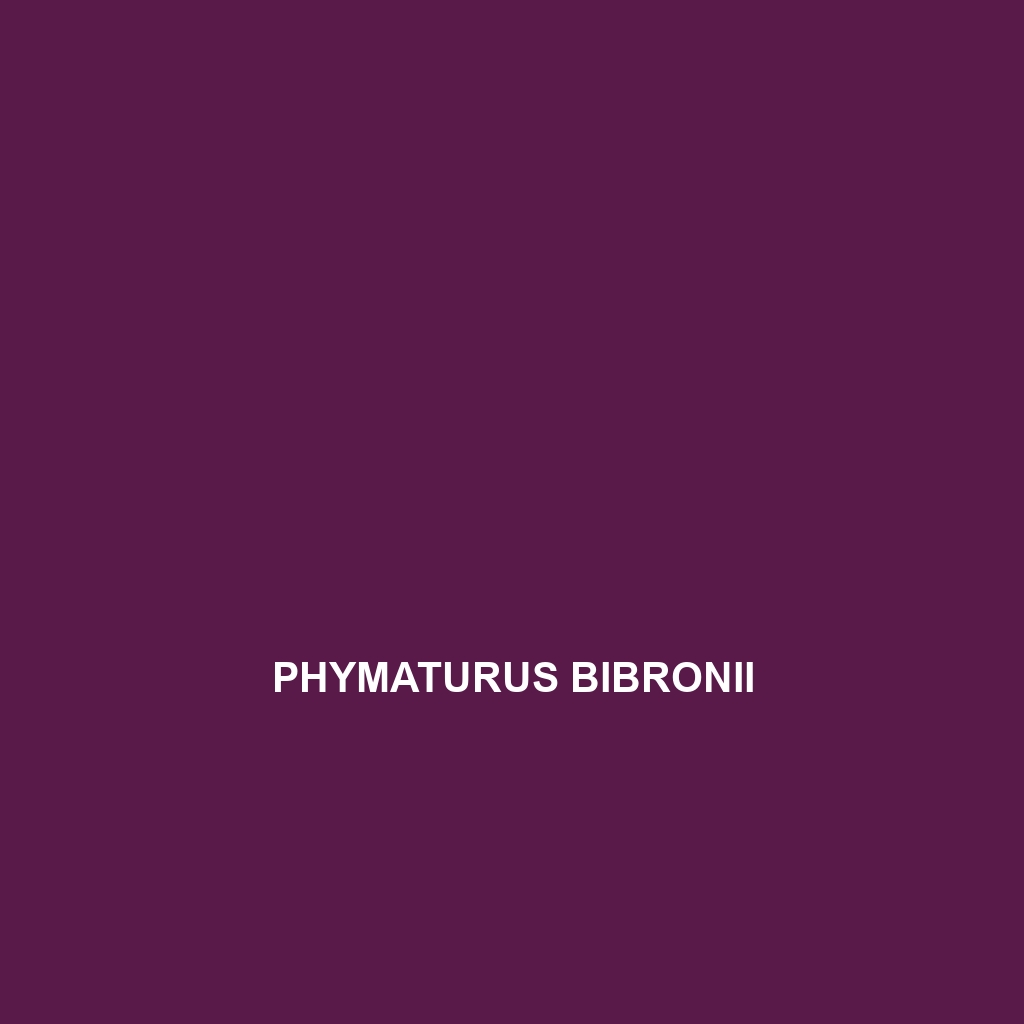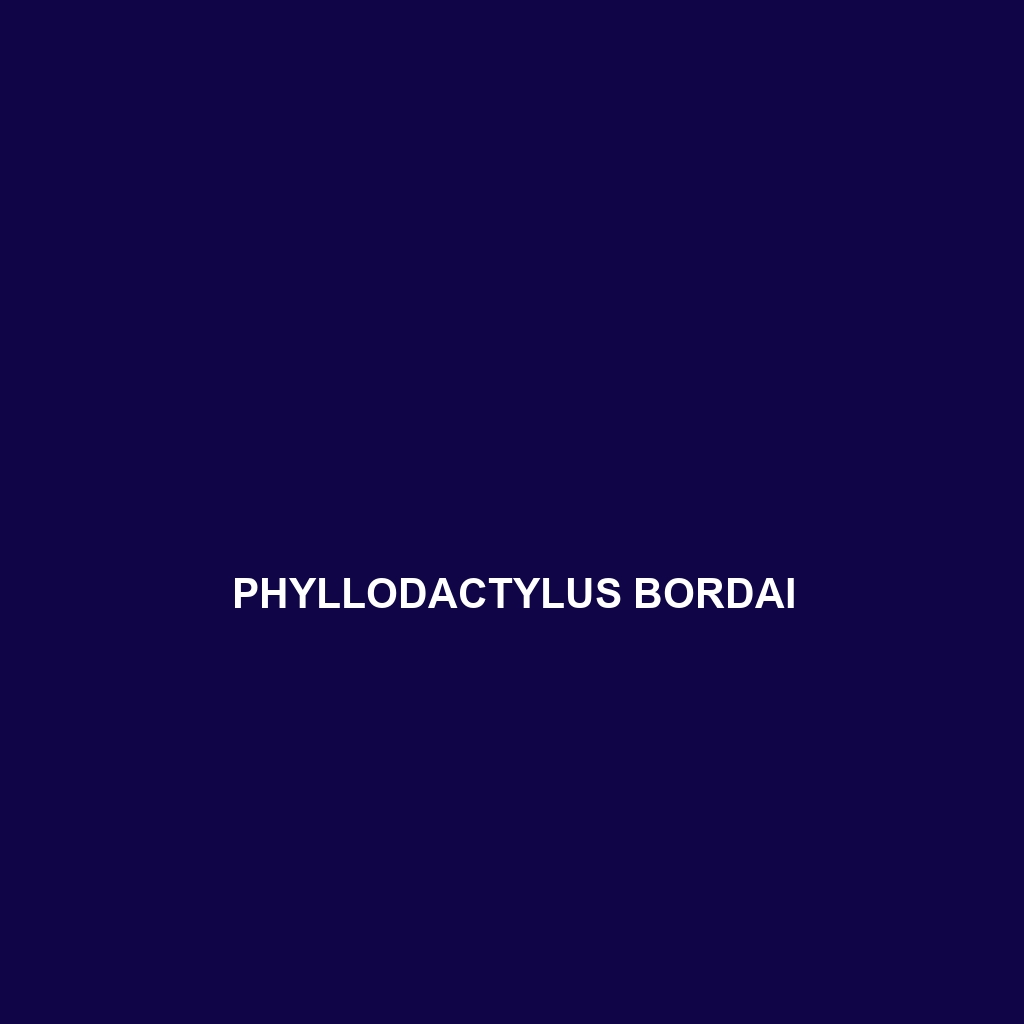<b>Pristidactylus alvaroi</b> is a medium-sized lizard native to temperate regions of southern Chile and Argentina, characterized by its elongated body, adaptive coloration, and diurnal behavior. This omnivorous species plays a vital role in its ecosystem by regulating insect populations and contributing to the food web, while also showcasing unique behaviors such as territorial displays and a fascinating mating dance.
Tag: lizard conservation status
Podarcis pityusensis
Podarcis pityusensis, commonly known as the Pityusic lizard, is a small, agile lizard found in the rugged coastal habitats of the Pityusic Islands in the Mediterranean. With its insectivorous diet and vibrant coloration, especially during breeding season, this species plays a vital role in its ecosystem, balancing insect populations while serving as prey for various predators.
Podarcis muralis
<p><b>Podarcis muralis</b>, commonly known as the wall lizard, is a diurnal species found across Southern Europe in rocky areas, gardens, and urban settings. Measuring 15 to 25 cm in length, these lizards exhibit varying coloration, a carnivorous diet primarily consisting of insects, and play a crucial role in controlling pest populations within their ecosystems.</p>
Podarcis melisellensis
<p><b>Podarcis melisellensis</b>, known as the Melisella lizard, thrives in the Mediterranean region, particularly in Italy, and features a slender body averaging 15 to 20 cm, with adaptable coloration for camouflage. As an insectivore, it plays a crucial role in maintaining ecological balance and exhibits fascinating behaviors, including diurnal activity and territorial displays during mating season.</p>
Podarcis liolepis
<b>Podarcis liolepis</b>, a slender lizard native to the Mediterranean, thrives in sunny, rocky habitats and is known for its striking green to yellowish-brown coloration. This insectivorous species plays a crucial role in controlling insect populations while exhibiting fascinating behaviors like sunbasking and tail-shedding as a defense mechanism.
Podarcis ionicus
Discover the Ionian wall lizard (Podarcis ionicus), a medium-sized reptile thriving in the coastal regions of Greece, known for its striking olive-green to brown coloration, territorial behavior, and role as an insectivore. This adaptable species, with a length of 18 to 25 centimeters, plays a crucial role in regulating insect populations and maintaining ecological balance in its Mediterranean habitat.
Platysaurus lebomboensis
<p><b>Platysaurus lebomboensis</b>, also known as the Lebombo Flat Lizard, is a striking insectivore native to the temperate forests and savannas of southeastern Africa, recognized for its flattened body, vibrant coloration, and impressive climbing abilities. This diurnal lizard plays a crucial role in its ecosystem by controlling insect populations and serving as prey for larger predators.</p>
Phymaturus bibronii
<b>Phymaturus bibronii</b>, also known as Bibron's Patagonian Lizard, is a striking, insectivorous species native to the temperate forests and shrublands of southern Argentina, characterized by its robust body, unique coloration, and social territorial behaviors. This diurnal lizard plays a vital role in its ecosystem by helping regulate insect populations while serving as prey for larger predators.
Phyllodactylus johnwrighti
<b>Phyllodactylus johnwrighti</b>, known as John Wright's phyllodactylus, is a nocturnal insectivore found in tropical dry forests and savannas of South America, characterized by its flattened body, adhesive toe pads, and ability to regenerate its tail. This adaptable lizard plays a vital role in controlling insect populations and maintaining ecosystem balance.
Phyllodactylus bordai
<p><b>Phyllodactylus bordai</b> is a small to medium-sized gecko, measuring 10 to 15 cm, found in the arid landscapes of South America. This nocturnal insectivore showcases striking camouflage with its mix of browns and tans, thriving in rocky terrains while playing a vital role in maintaining ecological balance.</p>

